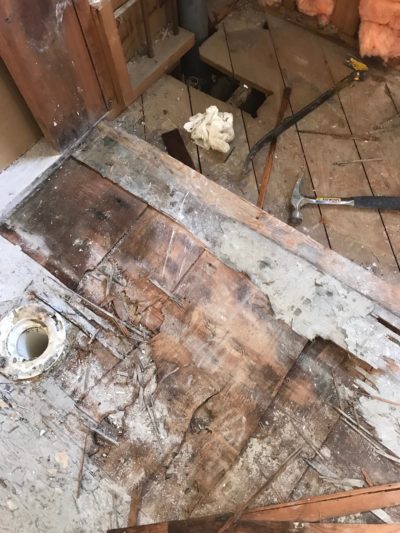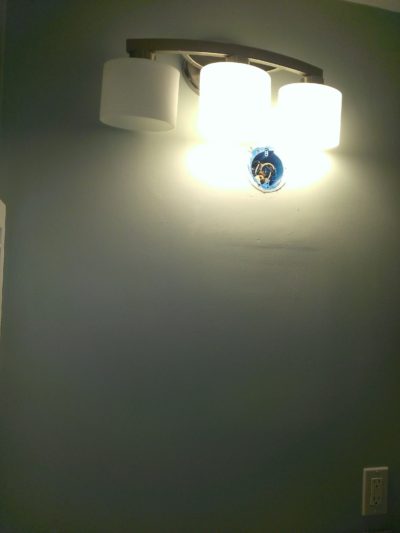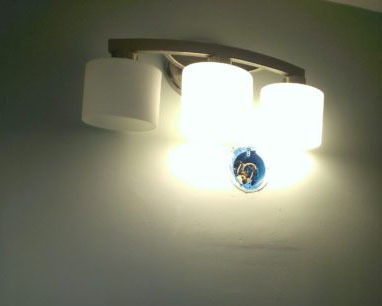Article summary
As I near my one year AO-versary (as we affectionately call our anniversaries at Atomic Object), I have started to look back at how much I’ve grown, not just as a UX designer, but also as a consultant.
I also recently had the opportunity to be a client to some other consultants: the designer and contractor working on my bathroom project. It went… less than well. And it gave me a lot of empathy for our clients, how much they rely on us, and how helpless and frustrated they can feel when the consultant doesn’t do their job.
Atomic’s Approach to Consulting
Atomic has a company culture and approach unlike anything I’ve experienced before. We also have a core set of statements called Atomic Values, which can be observed almost constantly within every Atom, every day, in every situation. But there are two that especially jump out to me when I think about our roles as consultants:
These are pretty obvious qualities that should be exercised at all times, and here, they are. It’s part of the reason we have had so many strong, long-lasting relationships with clients, and how we continue to produce such amazing, quality software for them.
These are the values that build trust and confidence. When absent, they are the values that are most missed and can severely jeopardize a client/consultant relationship.
Being on the Other Side
As a UX designer, I can relate almost any project to being like software development. To illustrate my point, I want to walk through my bathroom remodel (which will serve as an analogy for an application rewrite).
The Decision to do a Rewrite
My wife and I moved into our first home in December, and we weren’t planning on doing any major projects right away. But after a couple of months of using our current bathroom (or software), we started noticing some major bugs (back-end problems) that needed to be fixed: toilet wouldn’t refill with water, slow drainage in the shower, poor ventilation, etc.
These problems started to compound with the out-of-date aesthetics of the room (front-end), and we started looking online for products that we could just order and install ourselves. But it was clear that we didn’t know what we were doing (which is perfectly okay, and that’s why there are professionals).
We went to a big-box home improvement store and started talking to an associate about our goal to remodel, what we were looking for, and how much we wanted to budget for the project. This was a decent sales triage, and the person set us up to meet with a bathroom designer a week later.
Sales vs. Consulting
This was the fun part of the process: being on the client side and talking about our “grand vision” for our new bathroom. We glossed over the budget (a big mistake), but we got to walk around the store with the designer and pick out all of the bathroom elements (features) we wanted.
Bathrooms are pretty standard rooms, and we weren’t doing anything crazy. New vanity, sink, light fixture, toilet, tub/shower, floors, and tile. At this point, we were just picking components that we thought looked good together, with a little hand-holding from the designer. There was little consulting as to our specific needs, and more just selling us on components that could be installed.
We’d been sold on a vision, but to be honest, we had no idea what that vision even looked like.
Our next step was for the designer and the contractor (think tech lead or developer) to come over and see our current bathroom. There was a minimal cost involved in moving to this next step, which is completely understandable, and it showed a serious commitment on our part to keep moving forward.
Research, Design, and Planning (RDP)
For the sake of my analogy, let’s call this second next phase of the bathroom “Research, Design, and Planning” (RDP). RDP is a foundation of our customer software development process at Atomic. We take a human-centered design (HCD) approach, focusing on the users’ needs, as well as some of the technical aspects including existing infrastructure and environments.
The team showed up for our appointment bright and early, although about a week later than we were originally led to believe they would start. (It’s software…er…home improvement; delays happen.)
The contractor did a great job of assessing plumbing issues that he might encounter, as well as making us aware that when demolition happened, they might find some more issues. The designer, on the other hand, fumbled through some of the notes he took about the products we picked out and didn’t remember a lot of the details of our specific needs. This should have been a huge red flag that the person running this project did not “Give a Shit.”
Nevertheless, we continued on, thinking everything was situated and ready to go.
Fully Committing
At this point, we were fully expecting that we were close to our original budget, but when we met for the contract to be signed, we discovered that we were 40% over that figure. They explained that what we wanted to do just couldn’t be done on our original budget. This should have been communicated much earlier than the moment when we were preparing to sign the paperwork (“Act Transparently”).
It also would have been better if we didn’t have to pay for the project upfront, before any products had been purchased or work had been done. This was such a foreign concept to me, and we should have taken more caution when being asked to do this. Nevertheless, we paid, and we made a timeline to get started on the project.
Delays and Poor Planning
Part of the project schedule had to work around a vacation conflict on our part. So you can imagine my surprise when, during my vacation, I got a call from the store, telling me they were delivering the products to our house within the hour. This was also the first time I had heard from anyone on the project within the last month. It was another example of not “Giving a Shit.”
After we returned from vacation, the designer and contractor started the project on the originally scheduled day, but the products had still not been delivered. Keep in mind, at this point, we hadn’t seen the physical products we ordered, or even a rough plan for the room in general. Nevertheless, demolition began.
Dealing with Problems
There are a couple of different ways of dealing with problems involving consultant/customer relationships. The first is to be completely open and honest and have solid options in place, clearly stating the issue and how it might be resolved.
For our project, this happened on the very first day when the contractor noticed some floorboards needed to be reinforced. He took a picture, sent it to me, let me know why he couldn’t have seen this before the project started, and told me how much it would cost to fix it. Perfect! Obviously, it was not ideal, but I work in an industry where similar things could happen, and I appreciated the full explanation and plan.

The second way of dealing with a problem is to solve it yourself (as consultant/contractor) and hope it works. In our bathroom remodel, this happened many, many more times.
After a few issues like the vanity almost not fitting, the light fixture being hung off-center, no room for the towel bar and TP holder, and a mirror that was too big, I realized that the contractor didn’t have a real roadmap, plan, or vision for how this bathroom was supposed to look in the end. In fact, neither did my wife or I.
As a designer, I could never imagine moving forward without a solid plan in place. It’s important to work closely with your development team to come up with a plan, and to review that plan with the client.

All of these problems could have been prevented or discussed moving forward. For example, instead of placing a light fixture off-center and too low on the wall because of an issue with what’s behind the drywall, they should have suggested a different plan for lighting the bathroom. Instead, their solution was, “Put it there and hope they don’t notice.” Again, “Give a Shit.”
Being Defensive
This actually brings me to another Atomic Value: “Own It.” We all make mistakes; it’s human nature. But when mistakes happen, as a consultant, designer, developer, or whatever, it’s on us to take responsibility and find ways to resolve the issue. Unfortunately, that is not always what happens, and a defensive posture can be incredibly toxic to the project (someone may even write a blog post about it, ha!).
In this instance, I explained that my wife and I needed to see detailed plans of what had to be done, and how it would be done moving forward. The response from the contractor was less than thrilling. Instead, a new mirror has been ordered, and we don’t even know what it is (“Act Transparently,” “Give a Shit”…I don’t know anymore, do something…).
Moving Forward
As of writing this, we still do not have a 100% finished bathroom—and the project has taken over twice as long as the original estimate. For the most part, the bathroom is usable. And while some of the changes we asked for were made, others will need to be redone.

This has all been a great reminder of how well-tuned our process is at Atomic–how our core values are continually practiced and improved upon, and how I can be a better consultant, knowing what it feels like for clients when I don’t “Act Transparently” or “Give a Shit.”

